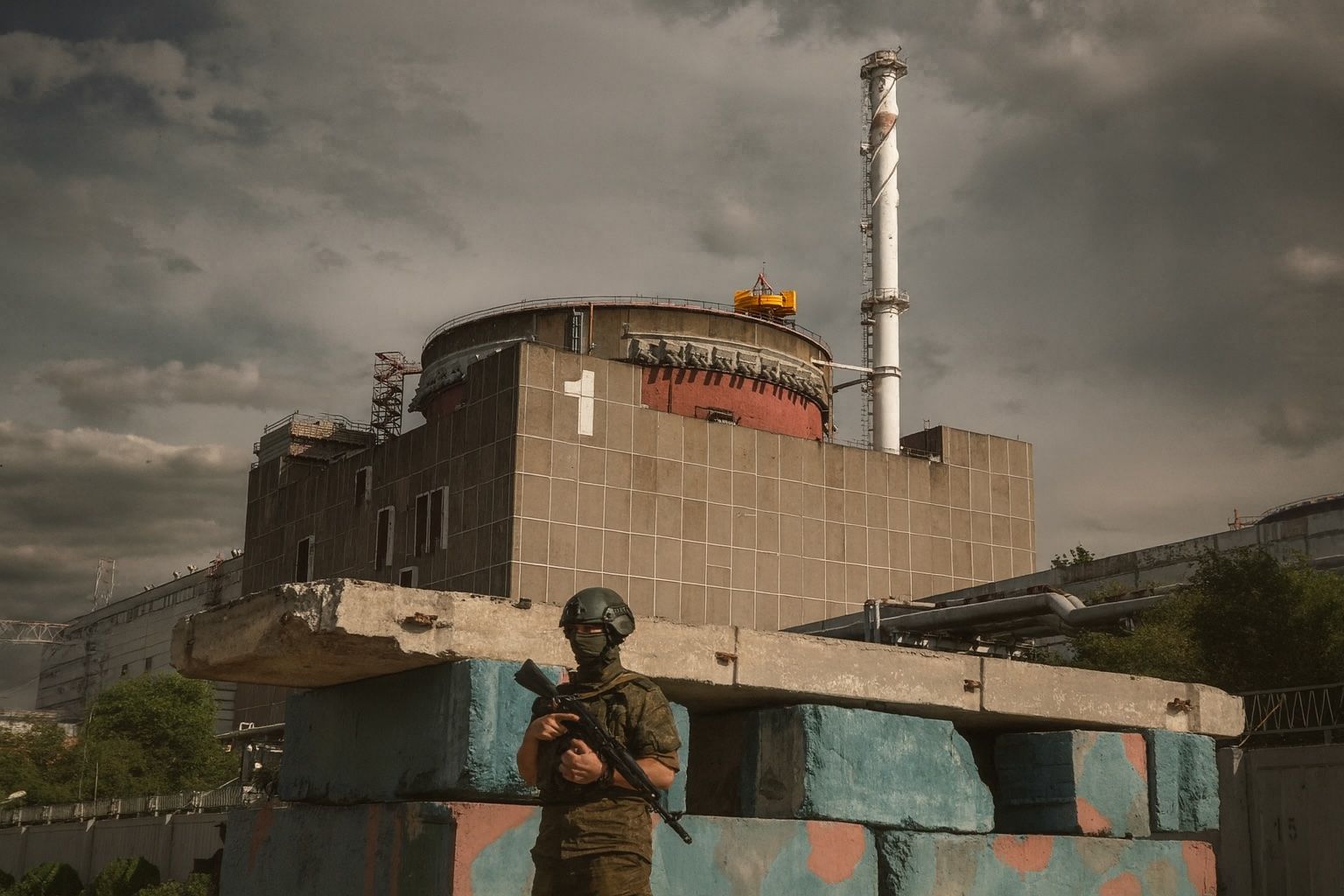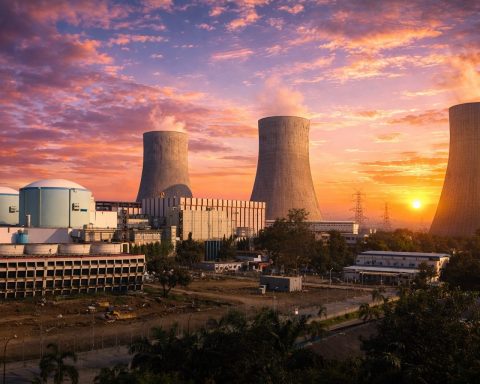- Off-grid for 7 days: Ukraine’s Zaporizhzhia plant, Europe’s biggest nuclear station (six reactors), has been cut off from the grid for a full week – the longest outage since Russia seized it in 2022. President Zelenskiy warned the “situation is critical” and noted that one of the plant’s diesel backup generators has already failed [1] [2].
- Running on diesel: Emergency diesel generators are powering the reactors and spent-fuel pools. The IAEA reports 8 of the plant’s 18 generators are operating, with fuel reserves to run them for over ten days [3] [4]. Director-General Rafael Grossi cautioned that while there is “no immediate danger as long as they keep working,” relying on diesels is “clearly not a sustainable situation” [5] [6].
- Reactor cooling needed: Though its reactors are shut down, Zaporizhzhia must stay powered to pump coolant around nuclear fuel and spent rods. Its external line was severed on Sept. 23, forcing the switch to generators [7] [8]. Without continuous cooling power, the fuel could overheat (a scenario akin to past nuclear accidents). The IAEA notes this is the 10th grid outage at Zaporizhzhia since 2022 [9] [10].
- Blame-shifting: Kyiv and Moscow trade accusations. Ukraine’s president says Russian shelling cut the power lines, while Russian-installed operators claim Ukrainian fire prevented repairs [11] [12]. The plant’s Russian-appointed managers insist the station “is under control,” with radiation levels “normal” for now [13].
- Safety under strain: Stress tests after Fukushima recommend <72 hours of off-grid cooling, a limit now long passed [14]. Experts warn that if the diesels ever fail, the risk of a meltdown becomes grave. Greenpeace nuclear specialists call this phase “critical and potentially catastrophic,” and Ukraine’s regulators say the outages pose “major threats” to safety [15] [16].
Situation Overview: The Zaporizhzhia plant sits near Energodar on the Dnipro river in occupied Ukraine. It was capable of powering 4 million homes before the war. Russian forces seized it in March 2022; its six VVER-1000 reactors were immediately shut down, cutting off a fifth of Ukraine’s electricity output [17] [18]. Even idle, the reactor cores and adjacent spent-fuel pools contain hot radioactive material that needs cooling. Normally this cooling comes from electric pumps powered by the grid. Since the latest power line was severed on Sept. 23, those pumps have instead been run by diesel generators [19] [20].
Zelenskiy’s Alarm: In his nightly address, President Zelenskiy said “the situation is critical”, emphasizing this is the first time the plant has gone so long without outside power [21] [22]. He warned, “No terrorist in the world has ever dared to do with a nuclear power plant what Russia is doing now” [23] [24]. Zelenskiy noted that the backup generators and the plant “were not designed for” continuous operation, and one of the eight main diesels had already broken down [25] [26]. He blamed Russian shelling for keeping repair crews from restoring the line.
IAEA Response: The UN’s nuclear watchdog, the IAEA, has responded cautiously. Director Rafael Grossi – who met both Ukrainian and Russian officials last week – says he is “in constant contact with the two sides” to reconnect the grid [27] [28]. The IAEA confirms that radiation levels at the plant remain normal and that for now the diesel generators are maintaining the essential cooling systems [29] [30]. Grossi stressed that as long as the backup power runs, there is “no immediate danger,” but he warned this can’t go on indefinitely [31] [32]. The agency’s on-site monitors report ample diesel fuel (enough for weeks of cooling) and say operators have been rotating generators in service [33] [34]. Grossi has reminded both sides that “neither would benefit from a nuclear accident” and urged them to allow repairs [35] [36].
Political and Expert Views: Ukraine’s nuclear regulator has called the blackout a “major threat” to safety [37], and some Ukrainian officials are even proposing that the IAEA take temporary stewardship of the plant to avoid disaster [38]. Western analysts note the outage appears to fit a pattern: all previous Zaporizhzhia cuts were caused by Russian attacks on Ukrainian power lines [39]. Greenpeace nuclear experts accuse Russia of “manufacturing a crisis” at the site. One specialist warned that Russian occupation “had entered a new critical and potentially catastrophic phase” [40]. (In fact, Russia has been planning to install its own new power line from the occupied grid, possibly to eventually restart a reactor – a highly controversial idea during wartime [41] [42].)
Safety Stakes: If Zaporizhzhia lost all power, it would resemble the 2011 Fukushima Daiichi accident. There, a tsunami knocked out cooling and led to meltdowns within days [43]. Here, with reactors already shut down (so somewhat cooler than during operation) the immediate risk is lower – but not zero. Fuel in the reactor cores and ponds still generates decay heat that must be removed. Ukraine’s IAEA governor noted the water reservoirs and backups are being managed, but cautioned any break in cooling pumps could, in weeks, lead to an uncontrollable heat-up of the fuel [44] [45]. Indeed, the last remaining power line supplying Zaporizhzhia is about 300 miles south of Chernobyl – just a reminder of how devastating a nuclear accident in Ukraine could be [46].
Looking Ahead: For now, world leaders are watching closely. Western capitals are alarmed by any military threats to nuclear sites. So far, both Russia and Ukraine say they want to avoid an accident. Russia’s-installed managers insist all safety rules are followed and have not disputed the IAEA’s assessments [47]. Still, the situation remains precarious. Global experts stress that diesel backups are a “last line of defense,” not a long-term solution [48] [49]. Restoring the external power connection – whether by repairing the old line under safe conditions or installing a new link – is seen as essential to defuse what experts call a “nuclear time bomb” on the frontline.
Sources: Latest reports from Reuters, The Guardian, Al Jazeera, and the AP/ABC News network have been used to compile this overview [50] [51] [52] [53] [54] [55]. These include direct statements by President Zelenskiy and IAEA head Rafael Grossi, as well as official technical updates on the plant’s status. The situation is evolving; all information is up-to-date as of early October 2025.
References
1. www.reuters.com, 2. abcnews.go.com, 3. www.reuters.com, 4. abcnews.go.com, 5. www.reuters.com, 6. abcnews.go.com, 7. www.reuters.com, 8. www.reuters.com, 9. www.reuters.com, 10. www.reuters.com, 11. www.reuters.com, 12. www.reuters.com, 13. www.reuters.com, 14. www.theguardian.com, 15. www.theguardian.com, 16. www.reuters.com, 17. www.reuters.com, 18. www.reuters.com, 19. www.reuters.com, 20. www.reuters.com, 21. www.reuters.com, 22. abcnews.go.com, 23. www.theguardian.com, 24. abcnews.go.com, 25. abcnews.go.com, 26. www.theguardian.com, 27. www.reuters.com, 28. www.reuters.com, 29. www.reuters.com, 30. abcnews.go.com, 31. www.reuters.com, 32. abcnews.go.com, 33. abcnews.go.com, 34. www.reuters.com, 35. www.reuters.com, 36. abcnews.go.com, 37. www.reuters.com, 38. www.reuters.com, 39. www.theguardian.com, 40. www.theguardian.com, 41. www.theguardian.com, 42. www.theguardian.com, 43. www.theguardian.com, 44. www.theguardian.com, 45. www.reuters.com, 46. www.reuters.com, 47. www.reuters.com, 48. www.reuters.com, 49. abcnews.go.com, 50. www.theguardian.com, 51. www.reuters.com, 52. www.reuters.com, 53. abcnews.go.com, 54. www.theguardian.com, 55. www.reuters.com










